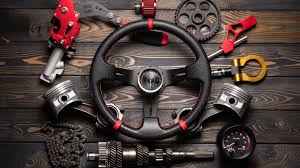Cars are intricate machines comprised of numerous drive belt components working in harmony to ensure smooth operation and safety on the road. Understanding these components is essential for both enthusiasts and everyday drivers. In this article, we delve into the essential car parts, exploring their functions and importance.
- Engine:
At the heart of every vehicle lies the engine, responsible for generating power by burning fuel. It comprises several crucial parts, including the cylinder block, pistons, crankshaft, camshaft, valves, and fuel injectors. The engine’s efficiency and performance depend on the synergy of these components working together seamlessly. - Transmission:
The transmission system transfers power from the engine to the wheels, enabling the vehicle to move forward or backward at different speeds. Common types of transmissions include manual, automatic, and continuously variable transmissions (CVT). Each type has its unique components such as gears, clutches, torque converters, and fluid systems. - Suspension System:
The suspension system ensures a comfortable ride by absorbing shocks and vibrations from the road surface. Key components include springs, shock absorbers (or struts), control arms, and sway bars. Proper suspension maintenance is vital for vehicle stability, handling, and tire wear. - Braking System:
Safety is paramount in any vehicle, and the braking system plays a crucial role in ensuring it. Components such as brake pads, rotors, calipers, brake lines, and master cylinders work together to bring the car to a stop when needed. Regular inspection and maintenance of the braking system are imperative for optimal performance and safety. - Steering System:
The steering system allows drivers to control the direction of the vehicle. Components such as the steering wheel, steering column, rack and pinion (or steering box), tie rods, and steering knuckles work together to facilitate smooth and responsive steering. Proper alignment and maintenance are essential for precise handling and tire longevity. - Electrical System:
Modern cars rely heavily on electrical systems to power various components and accessories. Key parts include the battery, alternator, starter motor, ignition system, wiring harnesses, sensors, and electronic control units (ECUs). Regular inspection and maintenance of the electrical system are crucial for reliable operation and preventing malfunctions.
Conclusion:
Understanding the fundamental car parts is essential for both vehicle owners and enthusiasts. Each component plays a vital role in ensuring the vehicle’s performance, safety, and longevity. By familiarizing yourself with these parts and their functions, you can better appreciate the intricacies of automotive engineering and maintain your vehicle more effectively.

